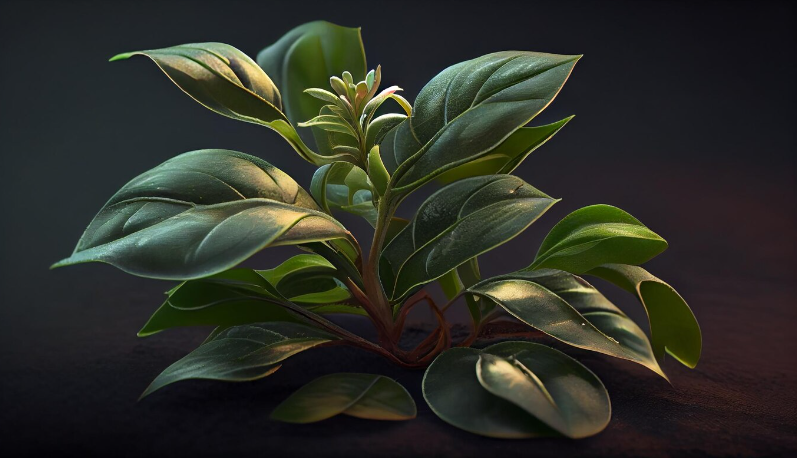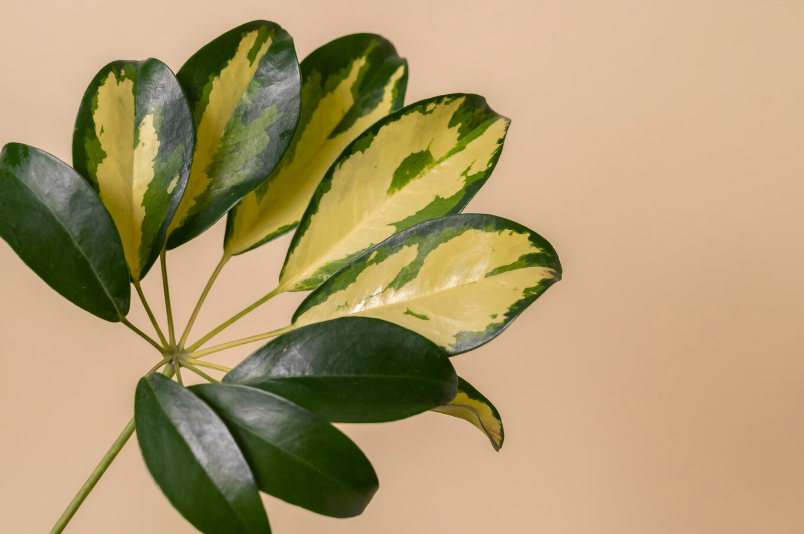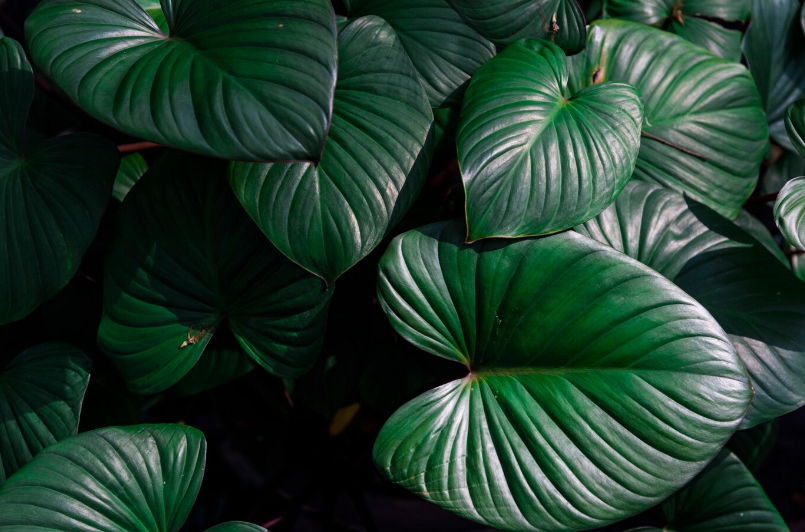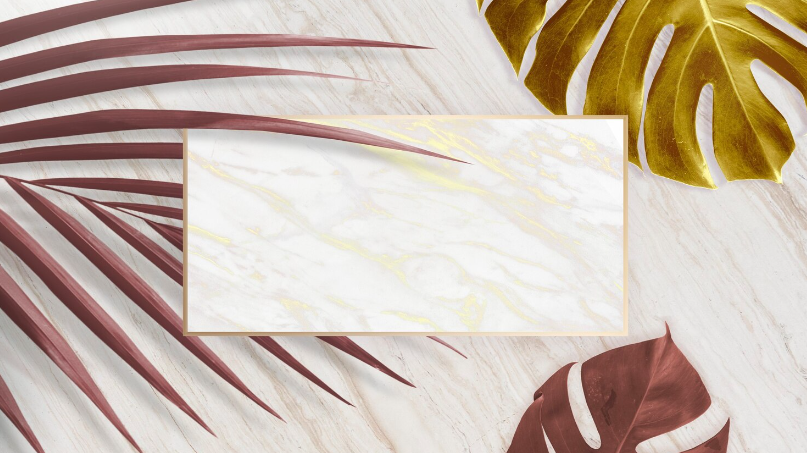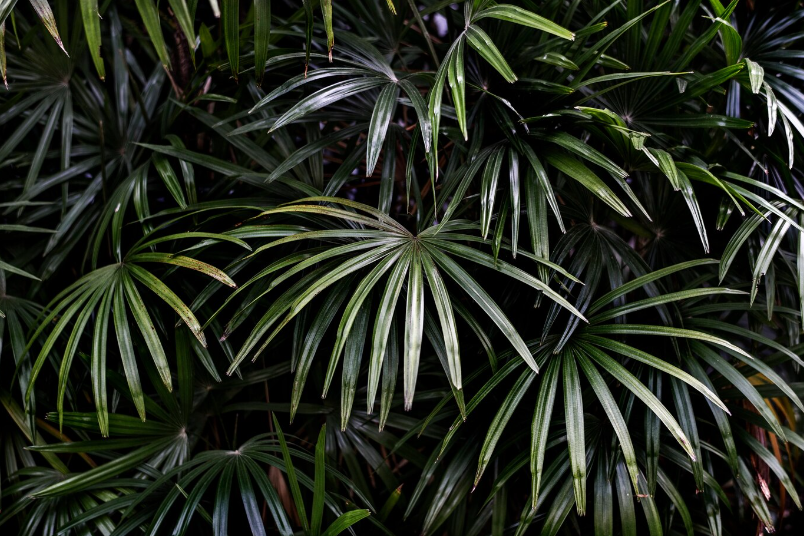Choosing the Right Soil for Philodendron Prince of Orange and White Princess

Are you a proud owner of Philodendron Prince of Orange or White Princess?
These stunning plants with their vibrant hues and unique foliage bring a touch of tropical elegance to any space. To keep your plants healthy and thriving, it is crucial to choose the right soil.
But what exactly is the right soil for these beauties?
Philodendron Prince of Orange and White Princess thrive in well-draining soil that retains moisture without becoming waterlogged. A mixture of peat moss, perlite, and rich organic compost creates the perfect balance.
Why is proper soil important?
The right soil ensures that your Philodendron plants receive the necessary nutrients and support for healthy growth. It also promotes good drainage, preventing issues like root rot.
So, how do you create the perfect soil mix?
Start with a high-quality potting mix rich in organic matter. This provides the necessary nutrients for your plants’ growth. Add perlite, a lightweight material that improves drainage and prevents compaction. Finally, incorporate peat moss to retain moisture while maintaining a well-aerated environment.
How often should you repot your Philodendron plants?
Philodendron Prince of Orange and White Princess appreciate being slightly root-bound. Repotting every 2-3 years is generally sufficient. When repotting, use fresh soil and a pot that is one size larger to give the roots room to grow.
Remember, choosing the right soil is vital for the health and beauty of your Philodendron Prince of Orange and White Princess. Follow these tips, and watch your plants thrive in their new home!
Tailoring Soil Composition for Specific Philodendrons
When it comes to cultivating healthy and thriving Philodendrons, choosing the right soil composition is crucial. Different species of Philodendron have varying soil requirements to ensure optimal growth and overall health. Here are some tips on tailoring the soil composition for specific Philodendrons:
- Philodendron Prince of Orange: This stunning Philodendron variety thrives in a well-draining soil mix that is rich in organic matter. A combination of peat moss, perlite, and orchid bark is ideal for this plant. It allows for proper aeration and moisture retention, preventing root rot and other moisture-related issues.
- White Princess: The White Princess Philodendron prefers a slightly different soil composition. It requires a well-draining mix with good water retention. A blend of potting soil, perlite, and coco coir works well for this variety. The coco coir helps retain moisture while maintaining proper drainage.
Remember to always assess the specific needs of your Philodendron plant and select the right soil composition accordingly. Providing the appropriate soil conditions will promote healthy growth, vibrant foliage, and a happy Philodendron in your indoor or outdoor space.
Ideal Soil Types for Philodendron Prince of Orange
When it comes to growing a healthy and vibrant Philodendron Prince of Orange, having the right soil is crucial. This beautiful indoor plant requires soil that provides adequate drainage and nutrients, while also retaining enough moisture for the roots to thrive. Here are some ideal soil types for your Philodendron Prince of Orange:
- Well-draining potting mix: A well-draining potting mix is essential for preventing waterlogging and root rot. Look for a mix that contains a blend of organic matter, such as peat moss or coconut coir, perlite, and vermiculite. These components help to improve aeration and drainage.
- Loamy soil: Philodendron Prince of Orange also thrives in loamy soil, which is a balanced mix of sand, silt, and clay. This type of soil provides excellent drainage while retaining enough moisture for the roots.
- Rich in organic matter: Adding organic matter to the soil can greatly benefit your Philodendron Prince of Orange. Compost, well-rotted manure, or leaf mold are all excellent choices to improve soil fertility and provide essential nutrients.
- Neutral to slightly acidic pH: Philodendron Prince of Orange prefers soil with a slightly acidic to neutral pH level. Testing the pH of your soil and adjusting it if necessary can help ensure optimal growing conditions for your plant.
Remember, choosing the right soil for your Philodendron Prince of Orange is essential for its overall health and growth. Providing a well-draining, nutrient-rich soil will help your plant thrive and reward you with its vibrant foliage. So don’t underestimate the importance of soil when it comes to cultivating a Philodendron Prince of Orange!
Selecting the Best Soil for Philodendron White Princess
When it comes to successfully growing Philodendron White Princess, choosing the right soil is crucial. This popular houseplant requires a well-draining soil that is rich in nutrients and organic matter to thrive and display its stunning foliage.
One important factor to consider when selecting soil for Philodendron White Princess is its moisture-retention capabilities. This plant prefers slightly moist soil, but it should never be waterlogged or excessively dry. Therefore, a well-draining soil that allows for proper moisture levels is essential.
Another crucial aspect is the pH level of the soil. Philodendron White Princess thrives in slightly acidic to neutral soil, with a pH range between 5.5 and 7.0. It’s important to choose a soil mix that falls within this range to provide optimal conditions for growth.
The ideal soil mix for Philodendron White Princess is a combination of peat moss, perlite, and well-rotted compost. The peat moss helps retain moisture while allowing excess water to drain properly. Perlite improves drainage and prevents the soil from becoming compacted. Well-rotted compost adds essential nutrients and organic matter to the soil.
It’s recommended to use a high-quality potting mix specifically formulated for tropical houseplants. These mixes usually have the right balance of nutrients, drainage, and moisture retention. Avoid using garden soil, as it tends to be too heavy and may not provide the proper conditions for Philodendron White Princess to thrive.
When transplanting Philodendron White Princess, make sure to choose a pot with drainage holes to prevent waterlogging. Fill the pot with the prepared soil mix, ensuring it is evenly distributed around the roots. Gently pat the soil down to remove any air pockets.
Remember to regularly monitor the moisture levels of the soil and water your Philodendron White Princess accordingly. Aim for a consistent level of moistness, but avoid overwatering.
By selecting the best soil for your Philodendron White Princess, you are providing it with the optimal growing conditions it needs to flourish and bring beauty to your indoor space.
Comparing Soil Needs: Prince of Orange vs. White Princess
Philodendron Prince of Orange:
The Philodendron Prince of Orange is a stunning tropical plant known for its vibrant orange leaves. To keep this plant thriving, it requires a well-draining soil mix that retains moisture while allowing excess water to escape easily.
The ideal soil for the Prince of Orange should be rich in organic matter and have good aeration. A mix of peat moss, perlite, and coarse sand is a great choice. This combination provides the necessary nutrients while preventing the soil from becoming waterlogged.
It’s crucial to avoid heavy clay soil as it retains water and can lead to root rot. The Prince of Orange prefers slightly acidic to neutral soil with a pH range between 5.5 and 7.0.
Note: Regularly check the moisture levels of the soil and adjust watering accordingly. Overwatering can cause the roots to suffocate and eventually die.
Philodendron White Princess:
The Philodendron White Princess is a beautiful cultivar featuring dark green leaves with striking white variegation. This plant requires a well-draining soil mix to prevent waterlogged conditions that can damage its delicate roots.
An appropriate soil mixture for the White Princess consists of peat moss, perlite, and orchid bark. This combination provides the necessary drainage while retaining enough moisture for the roots to absorb.
It’s crucial to avoid using heavy compacted soil as it can lead to root rot. The White Princess thrives in slightly acidic to neutral soil with a pH range between 5.5 and 7.0.
Note: Ensure that the soil doesn’t dry out completely between watering, as this can stress the plant. However, avoid overwatering as it can cause root suffocation and plant death.
Enhancing Plant Health and Aesthetics
Choosing the right soil is crucial for the health and aesthetics of your Philodendron Prince of Orange and White Princess. While these plants are known for their resilience and ability to thrive in various conditions, providing them with the optimal soil will ensure they reach their full potential.
When selecting soil for your Philodendron Prince of Orange and White Princess, it’s important to consider its moisture retention and drainage properties. A well-draining soil mix will prevent waterlogged roots and reduce the risk of root rot, which can be detrimental to the plant’s health. Loamy or sandy soil with good drainage is recommended.
In addition to drainage, the soil should also have good water retention capabilities. This will ensure that the plant receives adequate moisture without becoming oversaturated. Mixtures that include peat moss or coconut coir can help retain moisture while still allowing excess water to drain away.
Another aspect to consider when enhancing the health and aesthetics of your Philodendron Prince of Orange and White Princess is providing them with the necessary nutrients. A nutrient-rich soil will promote vigorous growth, vibrant foliage, and overall plant health. Consider adding organic matter or slow-release fertilizers to provide a constant supply of nutrients to the plant.
| Soil Requirements: | Benefits: |
|---|---|
| Well-draining soil | Prevents waterlogged roots and root rot |
| Moisture-retaining soil | Ensures adequate moisture without oversaturation |
| Nutrient-rich soil | Promotes vigorous growth and vibrant foliage |
By selecting the right soil mix for your Philodendron Prince of Orange and White Princess, you can enhance their health and aesthetics, allowing them to thrive and become a stunning addition to your indoor or outdoor space.
Enhancing Color Vibrancy in Philodendron Prince of Orange
Philodendron Prince of Orange is a beautiful tropical plant known for its stunning orange-colored leaves. To enhance the color vibrancy of this plant, it is important to choose the right soil and provide it with proper care.
First and foremost, the soil should be well-draining to prevent waterlogged roots, as excessive moisture can lead to leaf discoloration and rot. A mix of peat moss, perlite, and pine bark is ideal for this plant, as it provides adequate drainage while retaining enough moisture for healthy growth.
Additionally, incorporating organic matter into the soil can help improve the overall health and appearance of the plant. Adding compost or well-rotted manure can provide essential nutrients and promote better color development.
Sunlight exposure is also crucial in enhancing the color vibrancy of Philodendron Prince of Orange. This plant thrives in bright, indirect light, so placing it near a window with filtered sunlight will ensure optimal growth and vibrant leaf color.
Proper watering is key to maintaining the color vibrancy of this plant. It is best to water thoroughly when the top inch of soil feels dry, allowing the excess water to drain out completely. Avoid overwatering, as it can lead to root rot and dull the plant’s coloration.
Finally, regular fertilization can help boost the color intensity of Philodendron Prince of Orange. Using a balanced, water-soluble fertilizer once a month during the growing season can provide the necessary nutrients for vibrant foliage.
In conclusion, by choosing the right soil, providing proper sunlight exposure, watering appropriately, and fertilizing regularly, you can enhance the color vibrancy of Philodendron Prince of Orange and enjoy its stunning orange leaves to the fullest.
Strategies to Encourage Pink Variegation in White Princess
The White Princess is a stunning variety of Philodendron that features beautiful white and green leaves. However, if you’re looking to add a touch of pink variegation to your White Princess, here are some effective strategies to consider:
| 1. Adjust Lighting Conditions | Exposing your White Princess to bright, indirect light can encourage pink variegation. Place your plant near a window with filtered sunlight to provide the perfect growing conditions. |
| 2. Temperature Control | Maintaining a consistent temperature between 70-85°F (21-29°C) can help promote pink variegation in your White Princess. Avoid extreme temperature fluctuations, as they can hinder color development. |
| 3. Proper Watering | Providing appropriate moisture levels is crucial for encouraging pink variegation. Water your White Princess thoroughly but allow the top layer of soil to dry out between waterings. Overwatering can lead to root rot and affect the plant’s overall health and color. |
| 4. Fertilization | Using a balanced liquid fertilizer, apply a diluted solution every 2-4 weeks during the growing season. This will provide the necessary nutrients for vibrant pink variegation in your White Princess. |
| 5. Humidity | Philodendron White Princess thrives in humid environments. To encourage pink variegation, mist the leaves regularly or place the plant on a tray filled with water and pebbles to increase humidity levels. |
By following these strategies, you can enhance the pink variegation in your White Princess and enjoy its unique and beautiful foliage. Remember to provide the plant with consistent care and attention to ensure its health and color development.
Choosing the Right Fertilizer for Optimal Growth and Color
Providing your Philodendron Prince of Orange and White Princess with the right fertilizer is essential for promoting optimal growth and vibrant foliage color. By giving your plants the nutrients they need, you can ensure that they thrive and showcase their beautiful hues.
When it comes to choosing the right fertilizer, there are a few key factors to consider:
| NPK Ratio | The NPK ratio refers to the proportions of nitrogen (N), phosphorus (P), and potassium (K) in the fertilizer. For philodendrons, look for a balanced fertilizer with equal proportions of these three nutrients, such as a 10-10-10 or 20-20-20 blend. This will provide your plants with the necessary macronutrients for healthy growth and color. |
| Solubility | Choose a water-soluble fertilizer that can easily dissolve and be absorbed by the plant’s roots. This will ensure that the nutrients are readily available for uptake, promoting faster growth and development. |
| Micronutrients | In addition to the primary macronutrients (NPK), your philodendron can also benefit from micronutrients like iron, calcium, and magnesium. Look for a fertilizer that includes these essential elements to support overall plant health and enhance leaf color. |
It’s important to follow the instructions on the fertilizer packaging regarding application rates and frequency. Over-fertilizing can lead to nutrient burn and damage to the plant, so always err on the side of caution and apply fertilizer sparingly.
By selecting a fertilizer with the right NPK ratio, solubility, and micronutrient content, you can ensure that your Philodendron Prince of Orange and White Princess receive the nutrients they need for optimal growth and stunning foliage color.
Soil Preferences and Potting Mixes
Choosing the right soil is essential for the health and growth of your Philodendron Prince of Orange and White Princess plants. These stunning plants have specific preferences when it comes to soil type and potting mixes. Here are some tips to help you provide the best environment for your beloved philodendrons:
- Well-draining soil: Philodendron Prince of Orange and White Princess plants prefer a well-draining soil mix. This helps prevent waterlogging and ensures proper aeration for the roots.
- Loamy soil: A loamy soil mix, which consists of a balanced combination of sand, silt, and clay, is ideal for these philodendrons. This type of soil provides excellent moisture retention while allowing excess water to drain away.
- Organic matter: Adding organic matter to the soil mix can improve its fertility and water-holding capacity. Incorporating well-rotted compost or leaf mold can help create a nutrient-rich environment for your plants.
- Peat moss: Philodendron Prince of Orange and White Princess plants thrive in soil mixes that contain peat moss. Peat moss helps retain moisture and provides a slightly acidic pH, which these philodendrons prefer.
- Perlite or vermiculite: Adding perlite or vermiculite to the potting mix can enhance its drainage and aeration properties. These materials create air pockets in the soil, preventing it from becoming compacted and allowing oxygen to reach the roots.
- Fertilization: While soil is important, it’s also crucial to supplement your philodendrons with the right nutrients. Regular fertilization with a balanced water-soluble fertilizer during the growing season can help promote healthy growth and vibrant foliage.
By using the right soil mix and providing proper care, you can ensure the optimal growing conditions for your Philodendron Prince of Orange and White Princess plants. Happy gardening!
Components of the Best Potting Soil Mix for Philodendrons
When it comes to growing healthy and vibrant Philodendrons, choosing the right potting soil mix is crucial. The success of your indoor plants depends heavily on providing them with the perfect soil conditions. Here are the key components that make up the best potting soil mix for Philodendrons:
1. Well-Draining Medium:
A well-draining potting soil mix is essential for Philodendrons as it helps prevent waterlogging and root rot. To achieve optimal drainage, consider adding perlite or coarse sand to the soil mix. These materials improve the porosity of the soil, allowing excess water to flow through easily.
2. Organic Matter:
Adding organic matter to the potting soil mix helps improve its water retention capacity and nutrient availability. You can use compost, peat moss, or well-rotted manure as sources of organic matter. These materials also enhance the overall soil structure and promote beneficial microbial activity.
3. Balanced Nutrient Content:
Philodendrons require a balanced nutrient content in their potting soil mix to ensure healthy growth. A combination of slow-release fertilizers and organic amendments can provide a steady supply of essential nutrients. Look for a potting soil mix that contains a balanced ratio of nitrogen, phosphorus, and potassium (NPK).
4. pH Level:
The ideal pH range for Philodendrons is slightly acidic to neutral (pH 5.5-6.5). It is important to choose a potting soil mix with a pH level within this range to avoid nutrient deficiencies or toxicity. You can test the pH of the soil mix using a pH testing kit and adjust it accordingly with organic amendments or pH-adjusting products.
5. Sterility:
Using a sterile potting soil mix for Philodendrons helps prevent the growth of harmful pathogens and pests. Sterile soil reduces the risk of diseases and allows your plants to thrive in a clean and healthy environment. Look for a potting soil mix that has been sterilized or pasteurized to ensure optimal plant health.
By considering these components, you can create the best potting soil mix for your Philodendron Prince of Orange and White Princess varieties. Remember to provide your plants with well-draining, nutrient-rich soil to support their growth and help them flourish in your indoor space.
Special Soil Considerations for Different Philodendron Varieties
When it comes to caring for philodendron plants, choosing the right soil is crucial for their health and growth. Different varieties of philodendron have varying soil requirements, and understanding these considerations can help you provide the best conditions for your plants.
1. Philodendron Prince of Orange: This variety of philodendron thrives in well-draining soil that retains moisture. The ideal soil for Philodendron Prince of Orange is a mixture of peat moss, perlite, and compost. This combination provides good drainage while also holding enough moisture for the plant’s roots. Avoid using heavy, compacted soils that can create waterlogged conditions and lead to root rot.
2. Philodendron White Princess: The Philodendron White Princess prefers a well-aerated soil that allows for good root growth. A suitable soil mix for this variety includes equal parts of peat moss, perlite, and orchid bark. This combination promotes adequate drainage and prevents soil compaction, which can hamper the development of the plant’s roots.
3. Other Philodendron Varieties: While the Prince of Orange and White Princess have specific soil requirements, most philodendron varieties thrive in a similar soil mix. A well-balanced potting mix consisting of peat moss, perlite, and a small amount of compost or vermicompost works well for most philodendron plants. This combination provides good drainage, moisture retention, and essential nutrients for healthy growth.
Remember to check the moisture level of your philodendron’s soil regularly and adjust your watering schedule accordingly. Overwatering can cause root rot, while underwatering can lead to stress and leaf wilting. By providing the right soil conditions, you can ensure the lush and vibrant growth of your philodendron plants.
The Role of Soil in Supporting Philodendron Health and Growth
Growing a healthy and vibrant Philodendron Prince of Orange or White Princess requires careful attention to their soil needs. The soil plays a crucial role in supporting the overall health and growth of these plants. Here, we explore the importance of selecting the right soil and its impact on the well-being of your Philodendron.
1. Nutrient Absorption: The soil provides essential nutrients that Philodendrons need for their growth. A well-draining and nutrient-rich soil mix allows the roots to access the necessary elements, such as nitrogen, phosphorus, and potassium. These nutrients support the development of strong stems and lush foliage, ensuring a thriving Philodendron plant.
2. Moisture Retention: Philodendrons prefer slightly moist soil, as they are native to tropical regions with high humidity. The right soil composition aids in moisture retention while also allowing excess water to drain away. This balance is crucial to prevent overwatering or waterlogged roots, which can lead to root rot and other diseases.
3. Aeration: Adequate aeration is essential for the root system of Philodendron plants. Well-draining soil promotes air circulation and prevents the roots from suffocating. Aeration helps the roots access oxygen, which is vital for their respiration and overall health. It also encourages root development and strengthens the plants’ ability to absorb water and nutrients efficiently.
4. pH Balance: The pH level of the soil directly impacts nutrient availability and uptake for Philodendrons. These plants generally thrive in slightly acidic to neutral soil conditions, with a pH ranging from 5.5 to 6.5. Maintaining the proper pH balance ensures optimum nutrient absorption and prevents nutrient deficiencies or toxicities.
5. Disease Prevention: Choosing the right soil mix can help prevent various diseases that can affect Philodendron plants. Well-draining soil minimizes the chances of fungal infections or bacterial diseases caused by excess moisture or poor air circulation. By providing the ideal soil conditions, you can create an environment that is less conducive to the development of plant illnesses.
Remember, using high-quality soil specifically formulated for Philodendrons is essential for their overall health and growth. By paying attention to the soil composition and its roles, you can ensure your Philodendron Prince of Orange or White Princess thrives and becomes the centerpiece of your indoor or outdoor space.
Additional Care and Support for Philodendrons
1. Light Requirements: Philodendrons thrive in bright indirect light. Place them near a window, but avoid direct sunlight as it can scorch their leaves. If you notice your plant leaning towards the light source, rotate it periodically to ensure even growth.
2. Temperature: Philodendrons prefer temperatures between 65-85°F (18-29°C). Keep them away from drafts and cold air, as it can cause their leaves to turn yellow and drop.
3. Watering: Water your Philodendron thoroughly when the top inch of soil feels dry to the touch. Ensure proper drainage to prevent root rot. Overwatering can lead to root rot, while under-watering can cause dryness and stunted growth.
4. Humidity: Philodendrons appreciate higher humidity levels. You can increase humidity by using a humidifier, placing the plant on a tray with water and pebbles, or by grouping it with other plants. Mist the leaves occasionally to mimic a tropical environment.
5. Fertilization: Feed your Philodendron with a balanced liquid fertilizer once a month during the growing season (spring and summer). Follow the package instructions for dilution and application rates. Avoid over-fertilization, as it can lead to burned roots.
6. Pruning: Regular pruning helps maintain the shape and size of your Philodendron. Remove any dead, yellow, or damaged leaves with clean shears or scissors. You can also trim back leggy stems to promote bushiness.
7. Pests: Keep an eye out for common houseplant pests such as aphids, spider mites, and mealybugs. If you notice any signs of infestation, isolate the affected plant and treat it with an appropriate insecticide or natural remedies like neem oil or diluted soap solution.
8. Support: As Philodendrons grow, they may require support to prevent their vines from trailing or sagging. You can use plant stakes, moss poles, or trellises to provide support and encourage upright growth.
9. Propagation: If you want to propagate your Philodendron, it can be easily done through stem cuttings. Select a healthy stem with at least two nodes, remove the lower leaves, and place it in a jar of water or moist potting mix. Keep it warm and humid until roots develop, then transplant it into a well-draining potting mix.
By following these additional care and support tips, you can ensure that your Philodendron Prince of Orange or White Princess remains healthy, vibrant, and a stunning addition to your indoor plant collection.
Does Your Philodendron Need a Moss Pole? Prince of Orange and White Princess Cases
If you are a proud owner of a Philodendron Prince of Orange or White Princess, you know how beautiful and vibrant these plants can be. Known for their stunning foliage and unique growth patterns, these philodendrons often become the centerpieces of any indoor garden.
But here’s the question: Does your Philodendron Prince of Orange or White Princess need a moss pole to thrive? The answer may surprise you.
Moss poles are commonly used for climbing plants like Monstera deliciosa or Pothos. These plants have aerial roots that naturally cling to the pole, aiding in their upward growth. However, philodendrons are different. While they do have aerial roots, they are not natural climbers.
That being said, it is not necessary to provide a moss pole for your Philodendron Prince of Orange or White Princess. These plants are perfectly happy trailing along the ground or cascading from a hanging basket. In fact, they often develop more vibrant leaf colors when allowed to grow freely.
However, if you prefer a more upright growth habit for your philodendron, you can provide a moss pole as a decorative element rather than a functional necessity. By tying the stems of your plant to the pole, you can encourage a more vertical growth pattern.
It’s important to note that while moss poles may not be essential for Philodendron Prince of Orange and White Princess, proper care and maintenance are. These plants thrive in well-draining soil that retains some moisture. Providing regular waterings and ensuring adequate humidity levels will keep your philodendron looking its best.
In conclusion, the decision to use a moss pole for your Philodendron Prince of Orange or White Princess ultimately boils down to personal preference. These plants can flourish both with and without a pole, so choose the method that suits your aesthetic taste and desired growth habit. Happy gardening!
Soil Texture Preferences: Do Philodendrons Favor Sandy or Succulent Soil?
When it comes to choosing the right soil for your Philodendron Prince of Orange and White Princess, it’s important to consider their soil texture preferences. While these two popular Philodendron varieties have different foliage colors and patterns, they do share similar soil preferences.
Philodendrons are native to the tropical regions of Central and South America, where they grow in the understory of rainforests. In their natural habitat, they thrive in well-draining soils with a good balance of moisture and organic matter.
While sandy soil offers excellent drainage, it tends to dry out quickly and may not retain enough moisture to keep your Philodendrons healthy. On the other hand, succulent soil, which is a mix of sand, perlite, and peat moss, provides good drainage while retaining enough moisture for your plants.
Both Philodendron Prince of Orange and White Princess prefer soil that is slightly acidic to neutral, with a pH level ranging from 6.0 to 7.0. This pH range allows for optimal nutrient absorption, promoting healthy growth and vibrant foliage.
When potting your Philodendrons, it’s recommended to use a well-draining potting mix specifically formulated for tropical plants. This type of mix usually contains a blend of peat moss, perlite, and organic matter, allowing for proper moisture retention without becoming waterlogged.
Remember to always check the moisture level of the soil before watering your Philodendrons. These plants prefer to dry out slightly between waterings, as overwatering can lead to root rot and other issues.
In conclusion, Philodendrons, including the Prince of Orange and White Princess varieties, prefer soil with a good balance of moisture and drainage. A well-draining potting mix with a slightly acidic to neutral pH level will ensure optimal growth and health for your Philodendrons.
So, whether you choose sandy or succulent soil, make sure to provide your Philodendrons with the right conditions to thrive and enjoy their stunning foliage all year round.
Planting Techniques for Philodendrons: Prince of Orange and White Princess
Once you have chosen the right soil for your Philodendron Prince of Orange and White Princess, it’s time to learn the planting techniques for these beautiful plants. Proper planting is essential for their growth and overall health.
Here are some important steps to follow when planting your Philodendrons:
| Step 1: | Prepare the pot or container by filling it with the chosen soil mixture. Ensure that the pot has drainage holes to prevent waterlogging. |
| Step 2: | Carefully remove the Philodendron from its nursery pot. Gently loosen the roots if they are tightly bound to encourage better root growth. |
| Step 3: | Place the Philodendron in the prepared pot, making sure that the roots are spread out evenly. The plant should sit at the same level it was growing in the nursery pot. |
| Step 4: | Backfill the pot with the remaining soil mixture, firming it gently around the roots to provide support. Avoid compacting the soil too tightly to allow for proper aeration. |
| Step 5: | Water the newly planted Philodendron thoroughly. Use enough water to ensure that the soil is evenly moist but not waterlogged. |
| Step 6: | Place the potted Philodendron in a suitable location with indirect sunlight. These plants thrive in bright, non-direct light conditions. |
| Step 7: | Monitor the moisture levels in the soil and water the Philodendron as needed. Avoid overwatering, as it can lead to root rot. |
| Step 8: | Feed your Philodendron with a balanced liquid fertilizer once a month during the growing season to promote healthy foliage and vigorous growth. |
| Step 9: | Regularly inspect your Philodendron for any signs of pests or diseases. Treat them promptly to prevent further damage. |
| Step 10: | Prune your Philodendron as needed to maintain its desired shape and size. Remove any dead or yellowing leaves to promote better airflow and growth. |
By following these planting techniques, you can ensure that your Philodendron Prince of Orange and White Princess thrive and become a beautiful addition to your indoor or outdoor space.
Question-Answer:
What type of soil should I use for Philodendron Prince of Orange and White Princess?
Philodendron Prince of Orange and White Princess thrive best in well-draining soil that is rich in organic matter. A good mix to use is a combination of peat moss, perlite, and a small amount of sand.
Can I use regular potting soil for Philodendron Prince of Orange and White Princess?
While regular potting soil can be used for Philodendron Prince of Orange and White Princess, it is recommended to mix it with additional ingredients to improve drainage. Adding perlite, vermiculite, or coarse sand to the soil can help create a better growing environment for the plants.
What happens if the soil for Philodendron Prince of Orange and White Princess retains too much water?
If the soil retains too much water, it can lead to root rot and other fungal diseases. These conditions can cause the plant’s leaves to turn yellow or brown and eventually wilt. It is important to use well-draining soil and water the plants sparingly to prevent overwatering.
Can I use cactus soil for Philodendron Prince of Orange and White Princess?
While cactus soil is designed to provide excellent drainage, it may not be the best choice for Philodendron Prince of Orange and White Princess. These plants prefer soil that is slightly more moisture-retentive. It is better to use a mix of peat moss, perlite, and sand to create a suitable growing medium for the plants.
